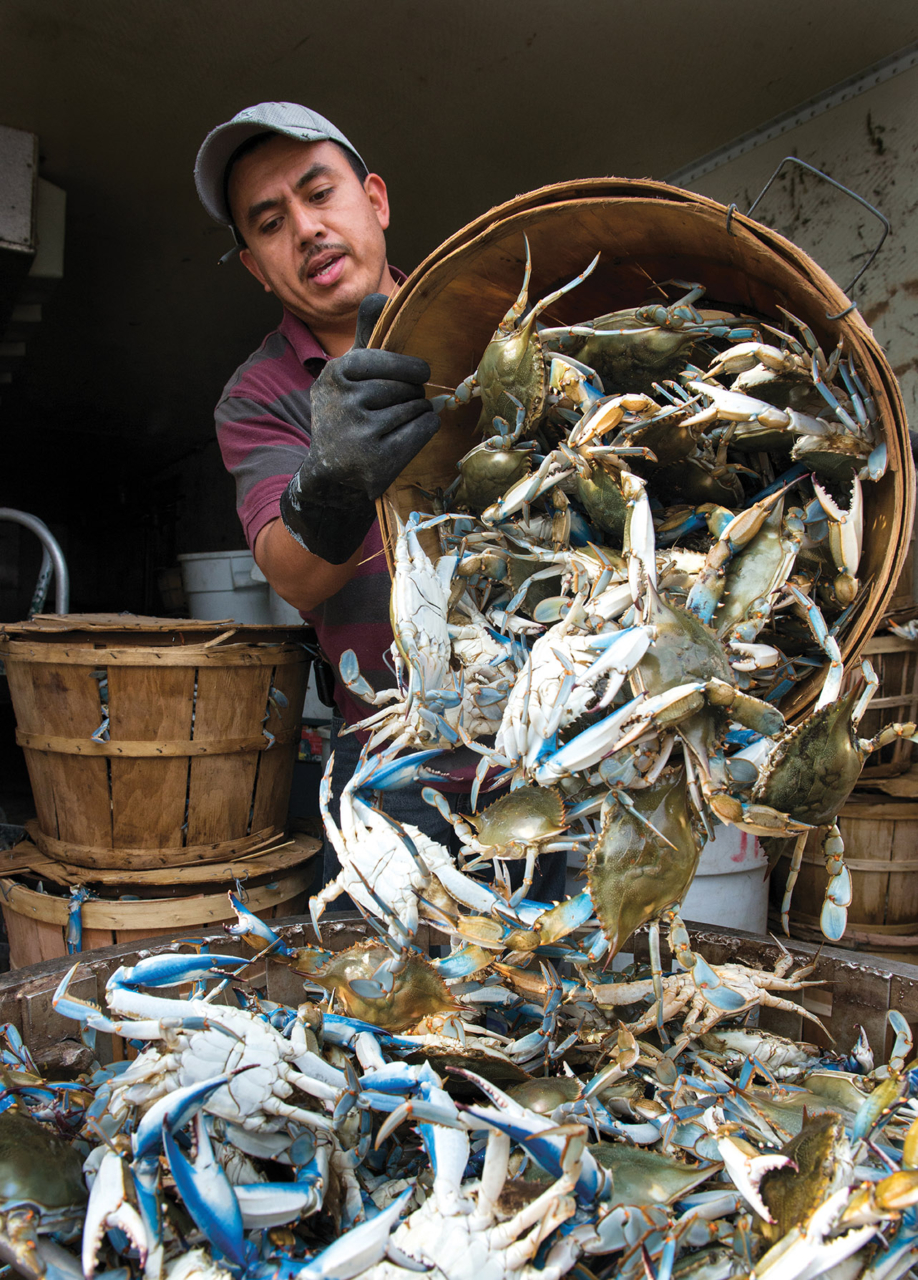Cambridge’s J.M. Clayton Company is the world’s oldest working crab business
Written by Joe Willey | Photography by Jay Fleming
A quiet icon of the Maryland crabbing industry sits at the shoulder of Cambridge Creek and the Choptank River. For over 130 years, this Dorchester County business has provided quality crab meat to generations of seafood lovers throughout the mid-Atlantic region. It continues to thrive with quiet confidence and knowledge that only a company entering its fifth generation of ownership can boast and stands as the oldest working crab company in the world.
The J.M. Clayton Company was founded in 1890 by John Morgan Clayton, known as “Captain Johnnie.” Originally, the company was located in Hoopersville, MD — a small town known for its collective crabbing knowledge. Hoopersville is a remote location, close to crabs, but far from growing modern conveniences and a convenient road to transport his product. When Clayton saw three parcels of land available at the mouth of Cambridge Creek and the amenities he needed to help his business grow, he moved the operation.
This landmark of the crabbing industry is still owned and operated by the fourth and fifth generations of J.M. Clayton’s family. Jack Brooks, his brothers Bill and Joe, and Jack’s son Clay, take special pride in the history and daily operations of the long-lived company.


ON THE CRAB
J.M. Clayton Company pickers amass an average of 25 pounds of crab each per day.
Photography by Jill Jasuta
Throughout its history, the J.M. Clayton Company has bought directly from watermen and prepares its crabs only a few feet from the lapping confluence of the river and creek. Two large steamers hold 22 bushels, about 800 pounds of crabs each. The commingled smells of the Choptank River, the warm summer air and the sweet seaweed scent rising from the steamers is a Maryland Blue Crab connoisseur’s paradise. All of their products are brand-named Epicure, after a log canoe owned by Captain Johnnie. The name is a fitting description of the product.
In 1957, the company began a revolution in the crab industry when it started naturally preserving crab meat without chemicals or preservatives, using only pasteurization. The process continues to be used and extends the shelf life of crab meat so consumers can enjoy its summer glory year-round.
The company may be a cornerstone of the industry, but Jack Brooks gives credit to the Chesapeake Region for the subtle taste of the crab meat for which Clayton’s is famous. He tells a story about what happens when attending the Boston Seafood Show. At its booth, the J.M. Clayton Company provides small samples of the company’s pasteurized product. Year after year, he has watched people walk by the table, grab the small cup, and keep walking, only to have them come back and ask what was used to season the crab. “Nothing,” Jack says, but they don’t believe him. He explains the unique flavor comes from the Chesapeake Bay and the tributaries rich with crabs.

Quality is the focus of the J. M. Clayton Company, so the lump crab meat is picked by hand because it provides the finest product. The crab picking season starts in April and ends in November, with pickers beginning each day early at 5 a.m. and averaging 25 pounds of picked meat. The picking room hums with energy and the sound of cracking steamed crabs. Jack Brooks calls the picking room the engine of the company.
For well over a century, the company has been a driving force in the crabbing industry. Without fanfare and with focus, the J.M. Clayton Company weathered the years when crabs were few and flourished when they were plentiful. The reputation of the business is hard-won and deserved. It is a singular accomplishment to be the oldest crab company in the world. To gain that distinction has taken time, devotion, and, most importantly, crabs. CS

